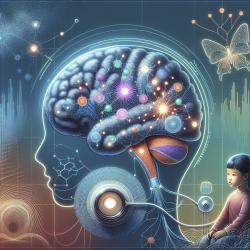Introduction
As a practitioner dedicated to the well-being of children and adolescents, understanding the complex interplay between physical pain and mental health is crucial. Recent research highlights a significant association between recurrent idiopathic pain and self-injurious behaviors, including suicide attempts, in adolescents. This blog aims to provide insights into these findings and suggest ways practitioners can enhance their skills and approaches in addressing these issues.
The Research at a Glance
The study titled The association of self-injurious behaviour and suicide attempts with recurrent idiopathic pain in adolescents: evidence from a population-based study explores the relationship between self-reported idiopathic pain and the prevalence of self-injury (SI) and suicide attempts in adolescents. Conducted with a sample of 5,504 students from South Western Germany, the study found that adolescents experiencing recurrent pain reported higher instances of psychopathological distress and were more likely to engage in self-harm and suicide attempts.
Key Findings
- 16.88% of respondents reported recurrent pain in areas such as general pain, headaches, and abdominal pain.
- Adolescents with pain had a significantly higher risk of self-injury and suicide attempts.
- The association between pain and self-destructive behaviors was partially mediated by psychopathological distress.
Implications for Practitioners
Understanding the link between physical pain and mental health can significantly enhance a practitioner's ability to provide effective care. Here are some strategies to consider:
- Comprehensive Assessment: Regularly assess adolescents with recurrent pain for signs of self-harm, suicidal thoughts, and past suicide attempts. This can help in early identification and intervention.
- Integrated Approach: Collaborate with mental health professionals to address both the physical and psychological aspects of pain. This holistic approach can improve outcomes for adolescents.
- Education and Awareness: Educate adolescents and their families about the potential mental health implications of chronic pain. Awareness can empower them to seek help promptly.
Encouraging Further Research
While this study provides valuable insights, there is a need for further research to explore the neurobiological underpinnings of these associations. Understanding the physiological mechanisms could lead to more targeted interventions.
Conclusion
Practitioners play a vital role in bridging the gap between physical and mental health for adolescents. By incorporating the findings of this study into practice, you can contribute to better outcomes for young individuals experiencing recurrent pain and associated mental health challenges.
To read the original research paper, please follow this link: The association of self-injurious behaviour and suicide attempts with recurrent idiopathic pain in adolescents: evidence from a population-based study.










